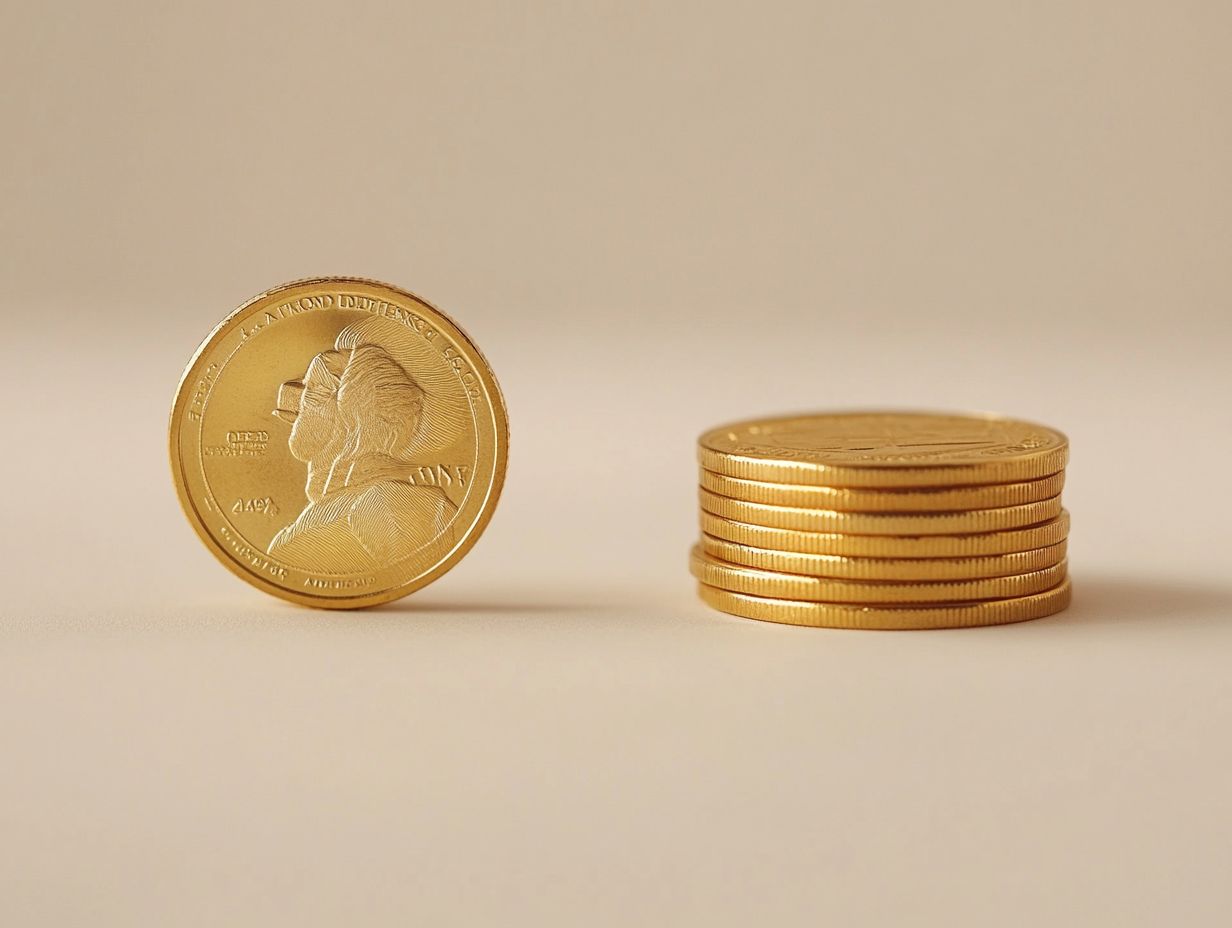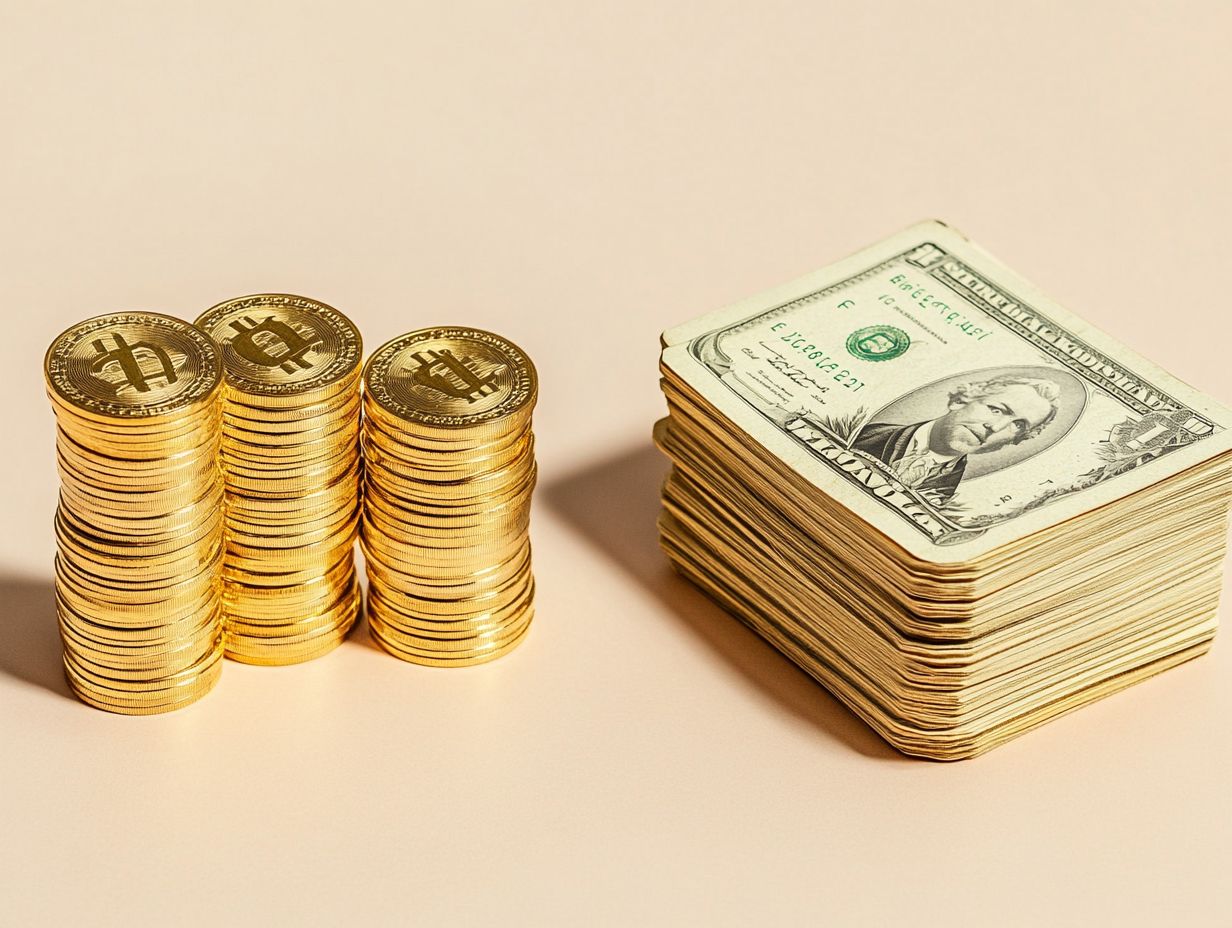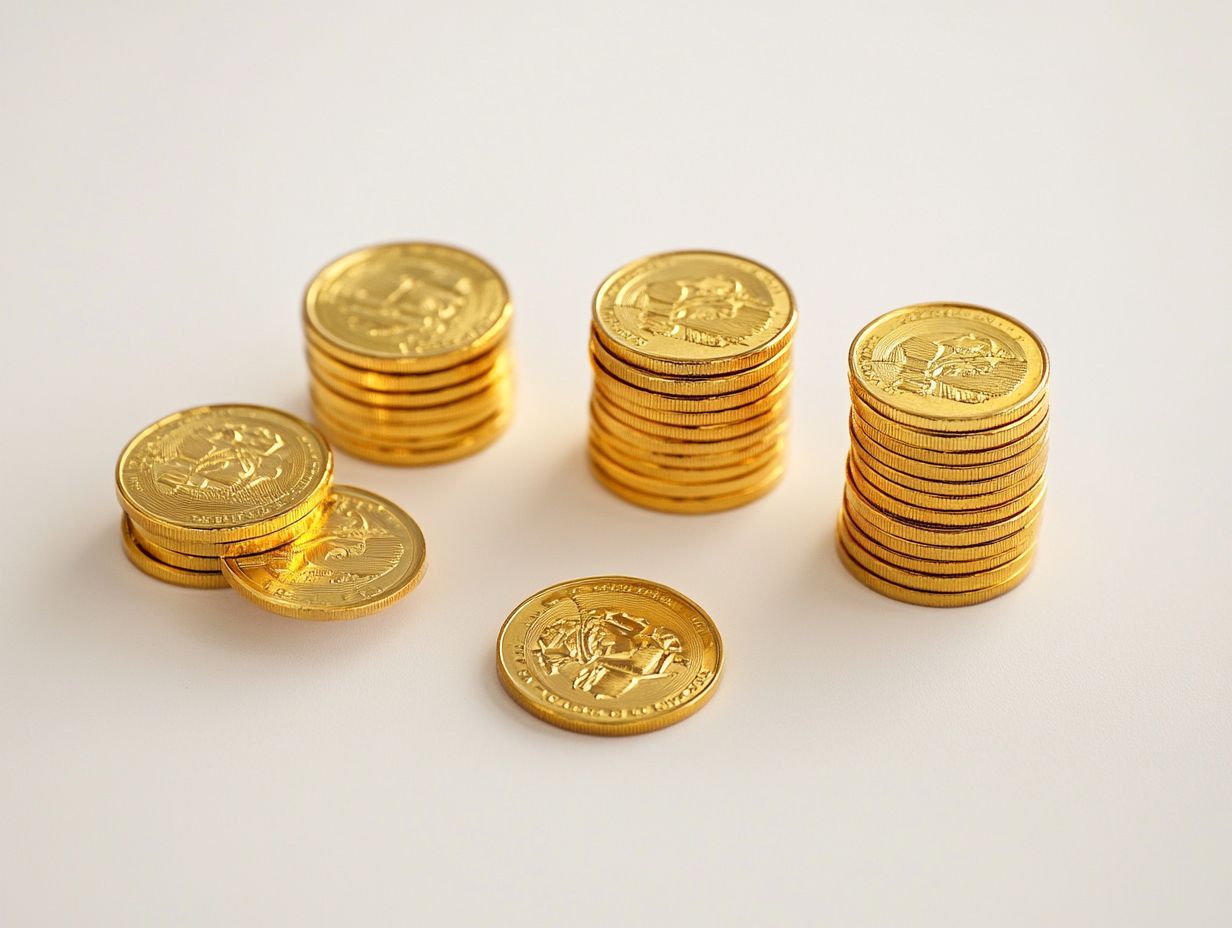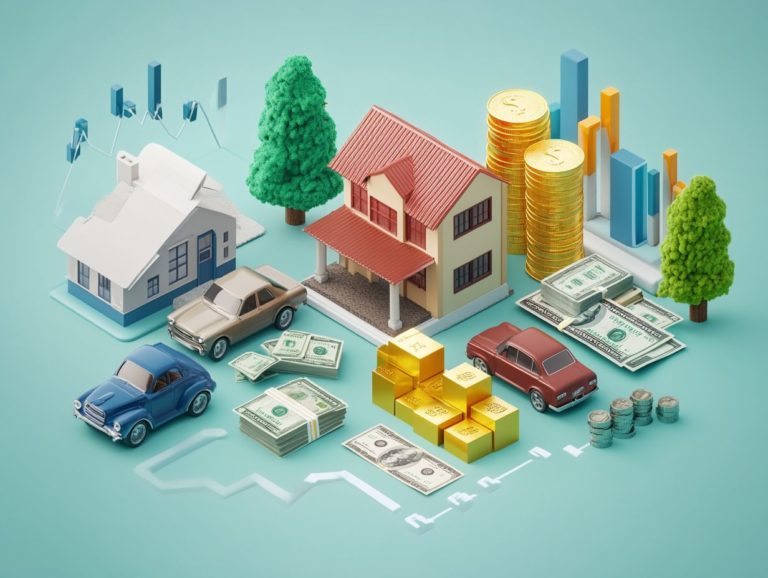Investment Liquidity: Physical vs. Paper
Understanding investment liquidity is essential for anyone aiming to grow their wealth effectively.
This article delves into the distinctions between physical and paper investments, illuminating their various types, advantages, and drawbacks.
It also examines how factors such as risk tolerance and investment goals can shape your decision between the two options.
Regardless of whether you are a seasoned investor or just beginning your journey, mastering these concepts will refine your investment strategy and empower you to make informed decisions in today s ever-evolving market landscape.
Contents
- Key Takeaways:
- Understanding Investment Liquidity
- Physical Investments
- Paper Investments
- Pros and Cons of Paper Investments
- Factors to Consider When Choosing Between Physical and Paper Investments
- Frequently Asked Questions
- What is investment liquidity and how does it differ between physical and paper assets?
- What are the advantages of investing in physical assets for liquidity?
- What are the drawbacks of holding paper assets for investment liquidity?
- Is it possible to have both physical and paper assets for investment liquidity?
- What are some examples of physical assets for investment liquidity?
- Are there any tax implications to consider when it comes to investment liquidity for physical and paper assets?
Key Takeaways:

- Physical investments provide tangible assets and can offer stability, but may have higher upfront costs and may be less liquid than paper investments.
- Paper investments offer convenience and flexibility, but may also be more susceptible to market fluctuations and carry higher risk.
- When deciding between physical and paper investments, it’s important to consider your risk tolerance, investment goals, and current market conditions.
Understanding Investment Liquidity
Investment liquidity pertains to the ease with which an asset can be converted into cash in financial markets, all while minimizing any substantial impact on its price. Grasping this concept is vital for you as an investor, as it directly shapes your trading strategies, whether you’re engaging in physical trading or paper trading.
Liquidity levels can vary dramatically across different asset classes, influencing market volatility and price fluctuations. For example, in highly liquid markets, you can execute trades swiftly, whereas lower liquidity may result in wider price differentials due to shifts in demand and supply.
Physical Investments
Physical investments involve tangible assets like oil, gold, and wheat, offering you a solid hedge against market volatility, inflation, and various economic uncertainties.
However, these investments present unique challenges, such as transportation costs, storage fees, and the necessity for quality control.
Understanding physical commodities is crucial for crafting effective investment strategies. This knowledge helps you leverage price changes and adapt to market conditions.
Types of Physical Investments
Types of physical investments include commodities like gold, oil, and wheat, each presenting unique benefits and challenges as you pursue building wealth.
These tangible assets hold real value and can be game-changers for your portfolio! For instance, gold is often regarded as an asset that is expected to hold or increase its value in times of market decline, providing you with stability and acting as a hedge against inflation.
Oil is vital to global economies and can deliver substantial returns, particularly when demand is on the rise. Meanwhile, agricultural commodities like wheat are essential for food security and can appreciate in price based on weather conditions and market demand.
By incorporating these physical investments into your strategy, you can effectively mitigate risks while potentially enhancing your returns. This makes them a wise choice for anyone looking to construct a robust and balanced investment framework.
Ready to explore physical investments? Start today and take control of your financial future!
Pros and Cons

Physical investments come with their own set of advantages and disadvantages. Carefully consider these factors before venturing into commodities. They can serve as a protective measure against inflation and market volatility. However, they also introduce challenges like quality control and liquidity issues that can complicate your trading experience.
Investing in tangible assets such as gold, silver, and real estate provides a reassuring sense of security during economic uncertainties. Their intrinsic value often remains stable or even appreciates over time. This stability is appealing, especially when inflation goes up, allowing you to preserve your purchasing power.
Recognize that these investments require proper storage solutions to maintain their condition. Accessing cash from them quickly can also present challenges. Weigh these concerns against the benefits of tangible ownership by exploring the differences in physical vs. paper investment in platinum to cultivate a nuanced understanding of how physical investments fit into your broader financial strategies.
Paper Investments
Paper investments include financial instruments that give you exposure to commodities without owning the physical assets. This category includes options contracts (financial agreements that give you the right to buy or sell an asset), futures markets (agreements to buy or sell an asset at a future date), and exchange-traded funds (ETFs).
These investment vehicles offer numerous advantages, such as high liquidity and lower capital requirements. This makes them appealing for those looking to diversify their portfolios and navigate risks effectively.
Types of Paper Investments
The primary types of paper investments you ll encounter include options contracts, futures markets, and exchange-traded funds (ETFs). Each type has distinctive features tailored for various investment styles and risk appetites. These instruments enable you to gain exposure to commodities and other assets without the headaches of physical delivery.
Options contracts grant you the right, but not the obligation, to buy or sell an asset at a predetermined price before a specific date. They are appealing if you’re looking to hedge risks or speculate on price fluctuations.
Futures markets involve agreements to buy or sell an asset at a future date. Businesses often use these to stabilize costs, while traders capitalize on market movements.
ETFs pool various assets, allowing you to diversify your portfolio easily while being traded like stocks. This provides both liquidity and flexibility, making portfolio management simple.
Pros and Cons of Paper Investments
While paper investments offer high liquidity and a protective measure against market volatility, they come with challenges, including emotional control and the complexities of trade execution. Weigh these pros and cons carefully to make the most of your investment journey!
The high liquidity of paper investments allows for rapid buying and selling, which is beneficial in dynamically changing markets. This ease of trading means you can respond swiftly to market changes. However, understanding physical vs. paper assets in investing is crucial, as the fast-paced nature can trigger emotional swings, leading to hasty decisions.
The potential for market manipulation exists, as less scrupulous entities may exploit quick trades. Therefore, staying vigilant and informed is essential for success as an investor.
Factors to Consider When Choosing Between Physical and Paper Investments

To make informed investment decisions between physical and paper investments, understand several key factors: your risk tolerance, investment goals, and current market conditions.
Each investment type has distinct characteristics. These play a crucial role in how well they align with your personal strategies and objectives.
Risk Tolerance
Risk tolerance is a critical factor in deciding whether you should choose physical investments or paper investments. It reflects your ability to absorb market fluctuations and investment risks. Understanding your risk tolerance now can set you on the path to financial success!
If you have a high risk tolerance, you might feel more comfortable with paper assets like stocks, which can experience wild swings in value. If you lean towards caution, you may prefer tangible assets such as real estate or gold, which generally offer greater stability. Understanding investment security: physical vs. paper can help you make informed decisions about your portfolio.
Emotional control is vital here. Managing your anxieties during market downturns helps you avoid impulsive decisions that could derail your long-term objectives. By being aware of your emotional responses, you can navigate the uncertainties of your investment paths, enhancing your chances of achieving both your short-term and long-term financial goals.
Investment Goals and Timeline
Setting clear investment goals and establishing a timeline are crucial elements of a successful investment strategy. They guide your decisions between physical and paper investments.
When you define your financial aspirations—whether it’s buying a new home, funding education, or securing your retirement—you create a roadmap for your investment choices. If you’re after quick returns, you might lean towards paper investments like stocks or ETFs, taking advantage of market fluctuations. If you’re in it for the long haul, consider physical assets like real estate or precious metals, especially as a hedge against inflation.
Aligning your investment decisions with your timelines helps you manage risks tied to market volatility and enhances your potential for wealth accumulation.
Market Conditions
Market conditions significantly influence the performance of both physical and paper investments, affecting how you respond to price changes and liquidity challenges. Understanding current market trends is essential for making timely investment decisions that align with your financial strategy.
Consider this: when economic confidence drops, you may see increased demand for tangible assets like gold or real estate, which many view as safe havens in uncertain times. Conversely, when market conditions improve, the value of equities and bonds may rise, prompting you to focus on paper investments.
This intricate dance of factors determines the risk-reward balance and impacts your approach to diversifying your investments, which means spreading your money across different assets. By assessing the implications of changing prices and varying liquidity levels, you can adjust your strategies to reduce risk and maximize potential returns.
Frequently Asked Questions

What is investment liquidity and how does it differ between physical and paper assets?
Investment liquidity refers to how easily an asset can be converted into cash without affecting its market value. Physical assets, like real estate or gold, usually take longer to sell and may incur transaction costs. In contrast, paper assets like stocks or bonds can be sold quickly with minimal fees.
What are the advantages of investing in physical assets for liquidity?
Physical assets provide a sense of security and tangible ownership, appealing during market volatility. These assets can also increase in value over time and serve as a hedge against inflation.
What are the drawbacks of holding paper assets for investment liquidity?
Paper assets are subject to market fluctuations and can quickly lose value, making them riskier for short-term liquidity needs. They require careful monitoring and management, as various factors like company performance and economic conditions can affect their value.
For more information about investments or to seek personalized advice, don t hesitate to reach out!
Is it possible to have both physical and paper assets for investment liquidity?
Yes, you can create a diversified portfolio with both physical and paper assets. This strategy can reduce risk and offer options for different market conditions.
What are some examples of physical assets for investment liquidity?
Examples of physical assets include real estate, precious metals, artwork, and collectibles. These can be sold, but turning them into cash may take more time and effort than paper assets.
Are there any tax implications to consider when it comes to investment liquidity for physical and paper assets?
Yes, tax implications vary for physical and paper assets. Be aware that selling physical assets may lead to capital gains tax, while dividends and interest from paper assets might be taxed as income.
It’s essential to talk to a financial advisor for tailored advice.















